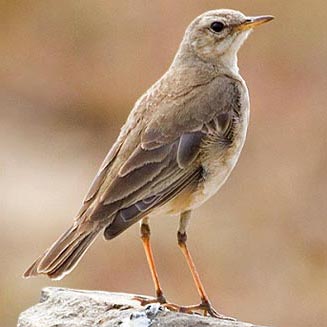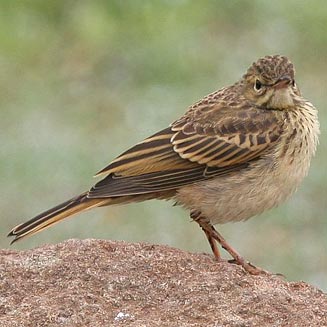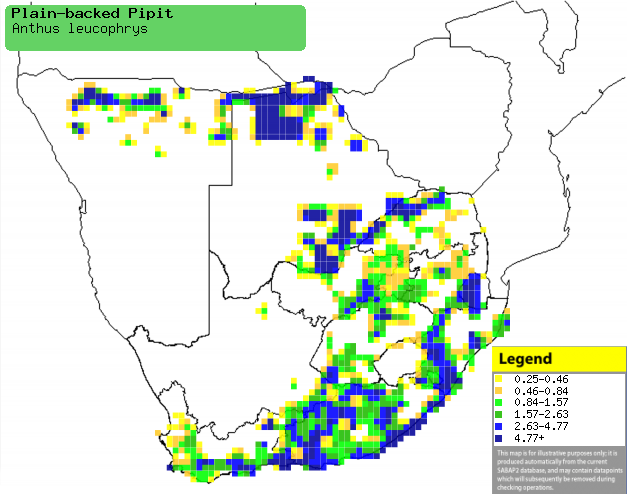|
Anthus leucophrys (Plain-backed
pipit)
Donkerkoester [Afrikaans]; Icelu, Icetshu (generic
terms for pipit) [Xhosa]; umNgcelekeshu, umNgcelu (generic terms for
pipit) [Zulu]; Tase (generic term for pipits) [South Sotho]; Xihitagadzi
[Tsonga]; Bruinrugpieper [Dutch]; Pipit à dos uni [French];
Braunrückenpieper [German]; Petinha-de-dorso-liso [Portuguese]
Life
> Eukaryotes >
Opisthokonta
> Metazoa (animals) >
Bilateria >
Deuterostomia > Chordata >
Craniata > Vertebrata (vertebrates) > Gnathostomata (jawed
vertebrates) > Teleostomi (teleost fish) > Osteichthyes (bony fish) > Class:
Sarcopterygii (lobe-finned
fish) > Stegocephalia (terrestrial
vertebrates) > Tetrapoda
(four-legged vertebrates) > Reptiliomorpha > Amniota >
Reptilia (reptiles) >
Romeriida > Diapsida > Archosauromorpha > Archosauria >
Dinosauria
(dinosaurs) > Saurischia > Theropoda (bipedal predatory dinosaurs) >
Coelurosauria > Maniraptora > Aves
(birds) > Order: Passeriformes
> Family: Motacillidae > Genus: Anthus
 |
 |
|
Plain-backed pipit. [photo
Neil Gray
©] |
Plain-backed pipit juvenile, Ntsikeni Nature
Reserve, South Africa. [photo Trevor Hardaker ©] |
Distribution and habitat
Occurs in patches across sub-Saharan Africa, from southern
Mauritania to Ethiopia south through southern DRC, Zambia and Angola to southern
Africa. Here it is locally common in northern Namibia, southern and northern
Botswana and South Africa (excluding most of the Northern Cape). It generally prefers moist short grassland with scattered
trees, rocks and termite mounds, cultivated land and Karoo dwarf shrubland,
however it may move into other habitats which have recently been burnt, as well
as sandy beaches with lots of seaweed, flood plains and marshes.
|
 |
|
Distribution of Plain-backed pipit in southern Africa,
based on statistical smoothing of the records from first SA Bird Atlas
Project (©
Animal Demography unit, University of
Cape Town; smoothing by Birgit Erni and Francesca Little). Colours range
from dark blue (most common) through to yellow (least common).
See here for the latest distribution
from the SABAP2. |
Food
It mainly eats insects and their larvae, doing most of its
foraging on the ground, plucking food from the soil and the bases of grass tufts. The following food items have been recorded
in its diet:
Breeding
- The nest is a deep cup of roots and coarse grass stems lined with fine
grass, roots and occasionally feathers, hair or fur. It is typically placed
in a hollow between or at the base of a grass tuft, which effectively
conceals it from intruders.
- Egg-laying season is from August-December, peaking from
October-November.
- It lays 2-4 eggs, which are incubated for up to 14 days.
- The chicks are fed by both parents on a diet of insects, leaving the
nest after about 16 days (based on one observation).
Threats
Not threatened.
References
-
Hockey PAR, Dean WRJ and Ryan PG 2005. Roberts
- Birds of southern Africa, VIIth ed. The Trustees of the John Voelcker
Bird Book Fund, Cape Town.
|
